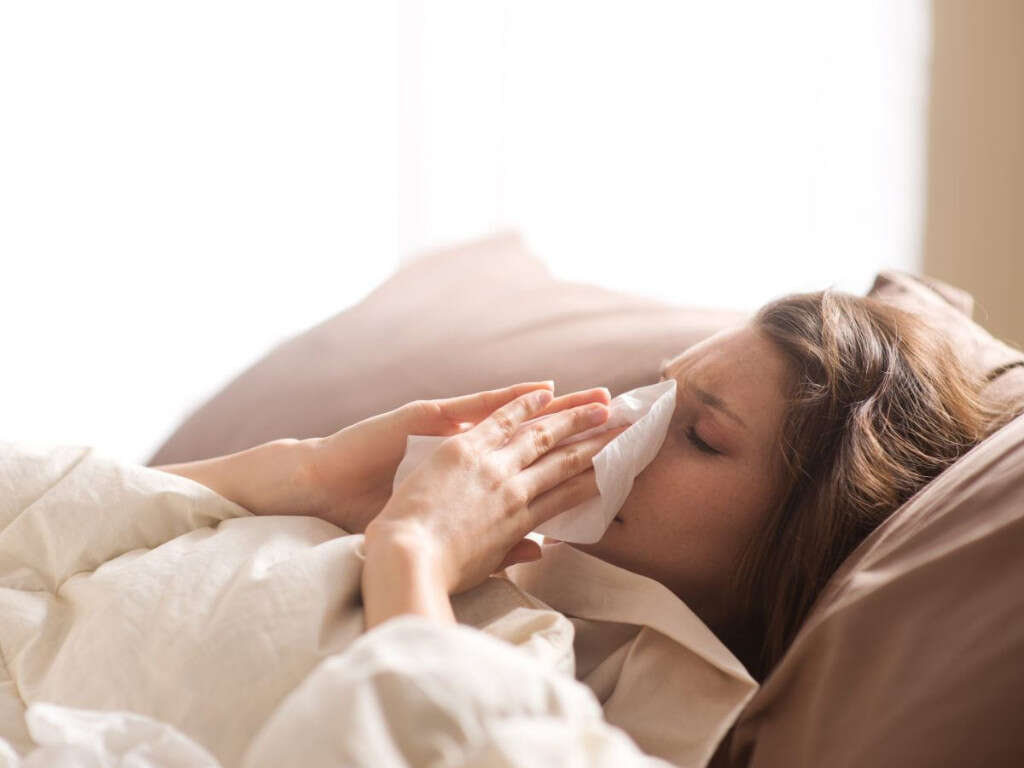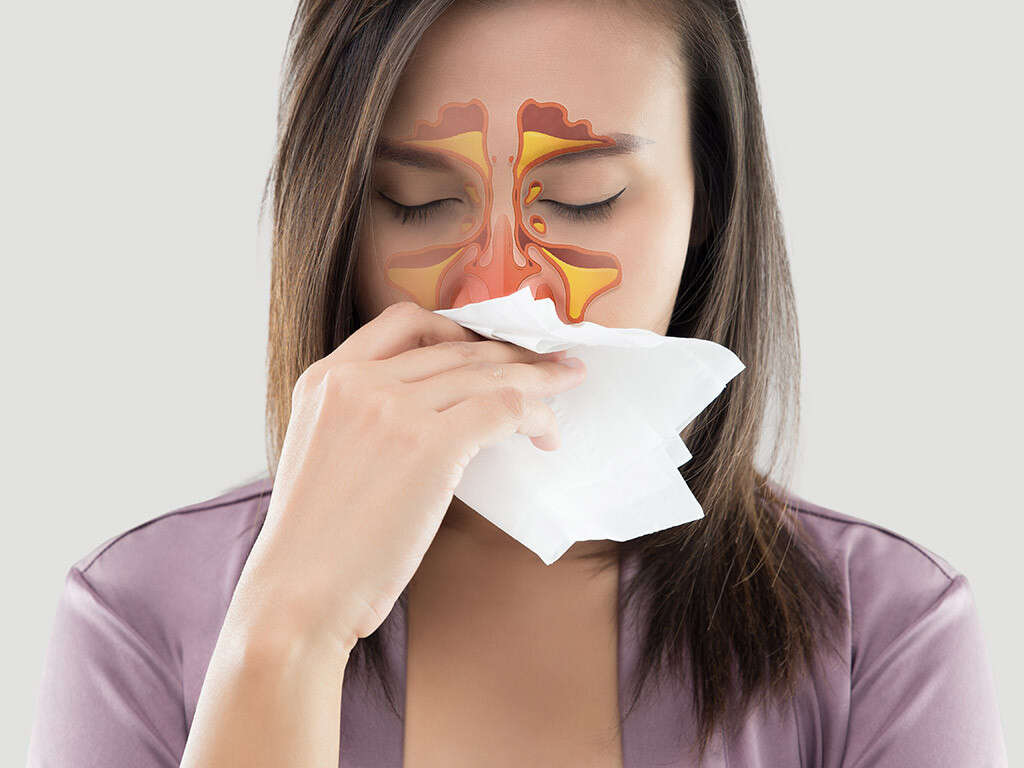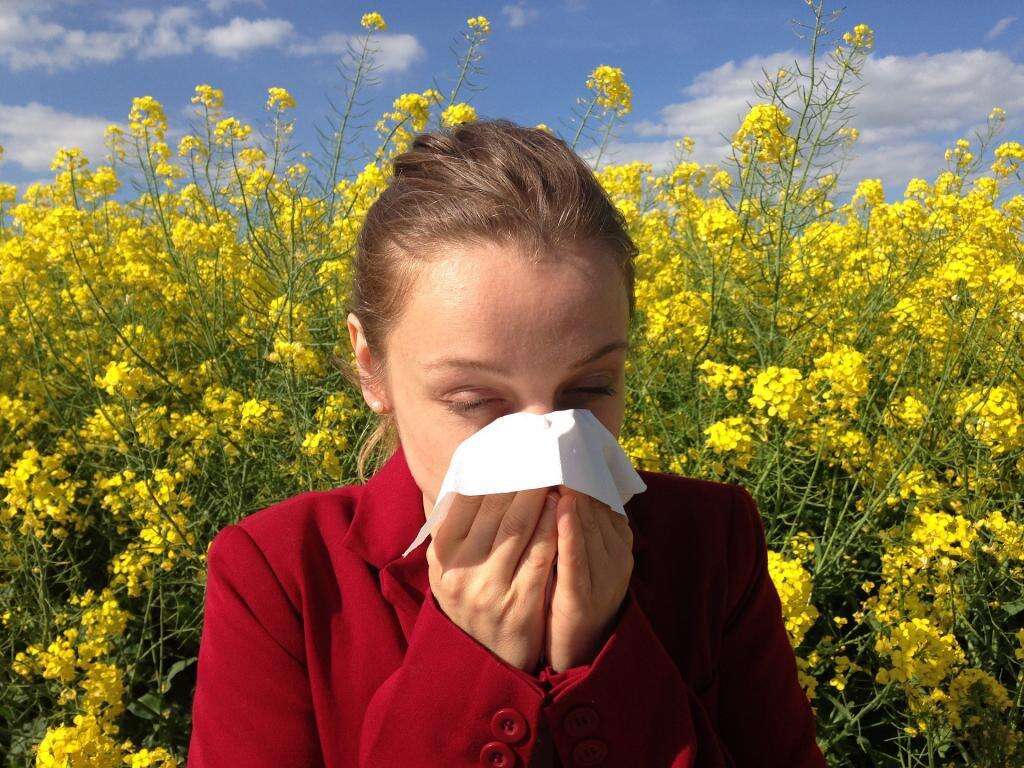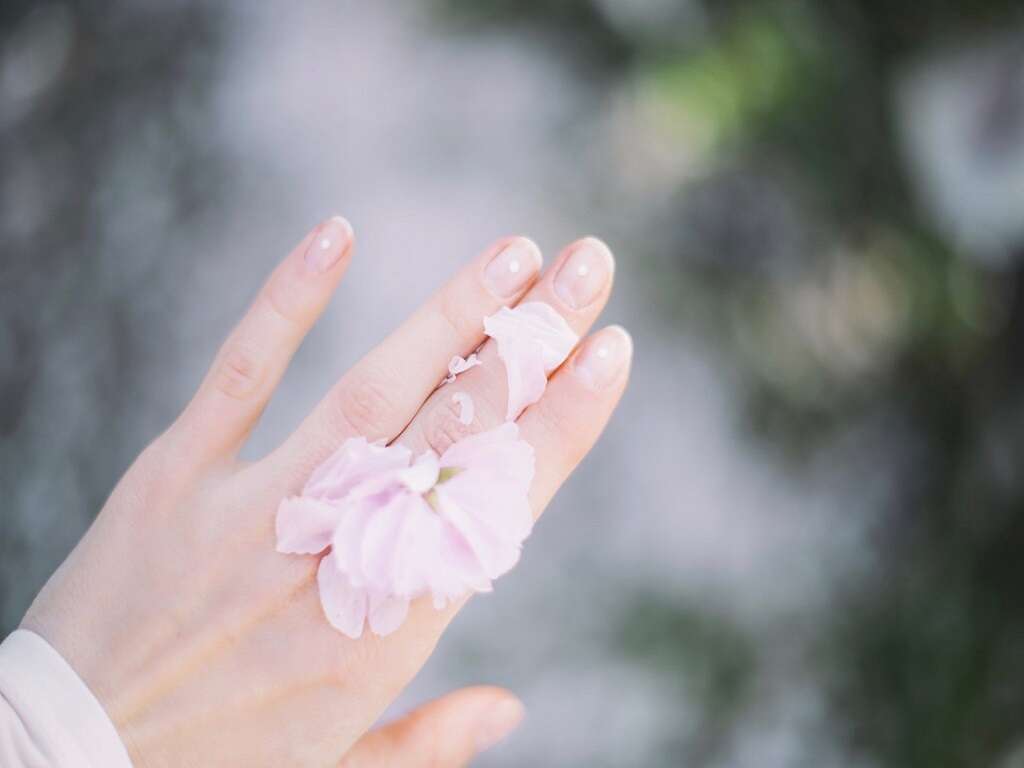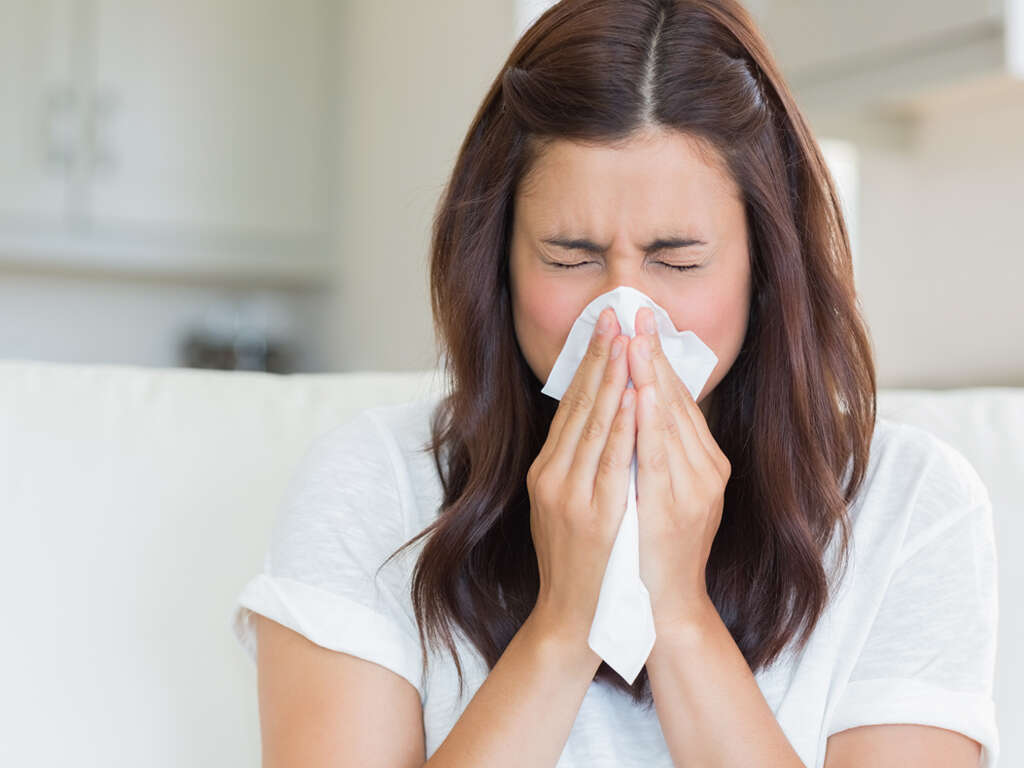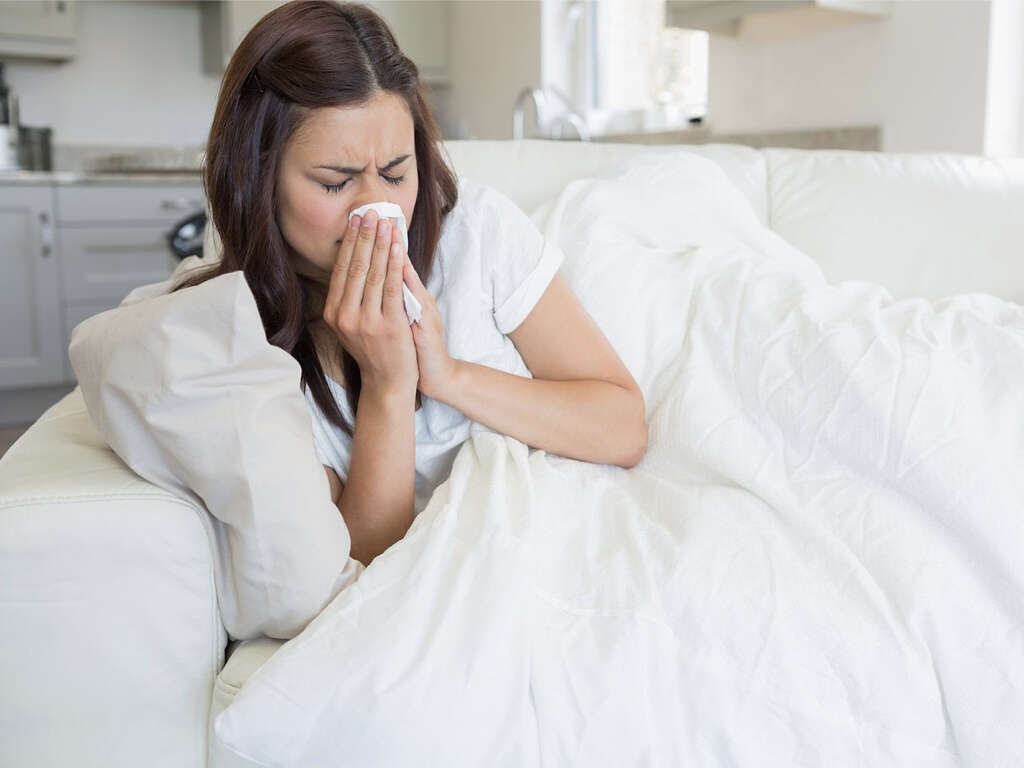10 Home Remedies for Allergies
 Article Sources
Article Sources
- 1. 'AAFA.' Asthma and Allergy Foundation of America, www.aafa.org/allergy-facts/#:~:text=
- 2. 'AAFA.' Asthma and Allergy Foundation of America, www.aafa.org/control-indoor-allergens/
- 3. 'What Is a HEPA Filter?' EPA, Environmental Protection Agency, 3 Mar. 2021, www.epa.gov/indoor-air-quality-iaq/what-hepa-filter-1
- 4. 'Is Rinsing Your Sinuses With Neti Pots Safe?' U.S. Food and Drug Administration, FDA, www.fda.gov/consumers/consumer-updates/rinsing-your-sinuses-neti-pots-safe
- 5. 'Butterbur.' National Center for Complementary and Integrative Health, U.S. Department of Health and Human Services, www.nccih.nih.gov/health/butterbur
- 6. YS; Kim KB; Kwak. 'Dehydration Affects Exercise-Induced Asthma and Anaphylaxis.' Journal of Exercise Rehabilitation, U.S. National Library of Medicine, pubmed.ncbi.nlm.nih.gov/31723551/
- 7. Mirzakhani, H, et al. 'Vitamin D and the Development of Allergic Disease: How Important Is It?' Clinical and Experimental Allergy: Journal of the British Society for Allergy and Clinical Immunology, U.S. National Library of Medicine, Jan. 2015, www.ncbi.nlm.nih.gov/pmc/articles/PMC4369152/#
- 8. Mlcek, Jiri, et al. Quercetin and Its Anti-Allergic Immune Response.' Molecules (Basel, Switzerland), MDPI, 12 May 2016, www.ncbi.nlm.nih.gov/pmc/articles/PMC6273625/
- 9. Miyata, Jun, and Makoto Arita. 'Role of Omega-3 Fatty Acids and Their Metabolites in Asthma and Allergic Diseases.' Allergology International, Elsevier, 27 Oct. 2014, www.sciencedirect.com/science/article/pii/S1323893014000100
- 10. Bakhshaee, Mehdi, et al. 'Efficacy of Supportive Therapy of Allergic Rhinitis by Stinging Nettle (Urtica Dioica) Root Extract: a Randomized, Double-Blind, Placebo- Controlled, Clinical Trial.' Iranian Journal of Pharmaceutical Research : IJPR, Shaheed Beheshti University of Medical Sciences, 2017, www.ncbi.nlm.nih.gov/pmc/articles/PMC5963652/
More than 50 million Americans experience some type of allergic reaction every year. Some have seasonal allergies that come in the spring, fall or both. Others experience year-round responses to dust mites and pet dander. Indoor allergens are more common than many realize.
Research shows eight out of every 10 people react to dust mites, and six out of 10 respond to pet dander, experiencing unpleasant symptoms. Limiting exposure is one way to reduce allergic reactions. However, once it occurs, some home remedies for allergies may relieve or reduce the symptoms.1‘AAFA.’ Asthma and Allergy Foundation of America, www.aafa.org/allergy-facts/#:~:text=,2‘AAFA.’ Asthma and Allergy Foundation of America, www.aafa.org/control-indoor-allergens/

HEPA Filters
One way to prevent problems with allergens is with HEPA filters and air purifiers. The high-energy particulate air filter removes dust mites, pet dander, mold, chemicals, volatile organic compounds and pollen from the air. These filters capture 99.97% of allergens.
Look for the MERV or minimum efficiency reporting values when purchasing the air filters. The ratings vary from one to 16, depending on average particle size efficiency. These can provide relief year-round with the right size air purifier. Individuals with regular allergies might consider a personal purifier with a quality HEPA filter for their bedroom.3‘What Is a HEPA Filter?’ EPA, Environmental Protection Agency, 3 Mar. 2021, www.epa.gov/indoor-air-quality-iaq/what-hepa-filter-1
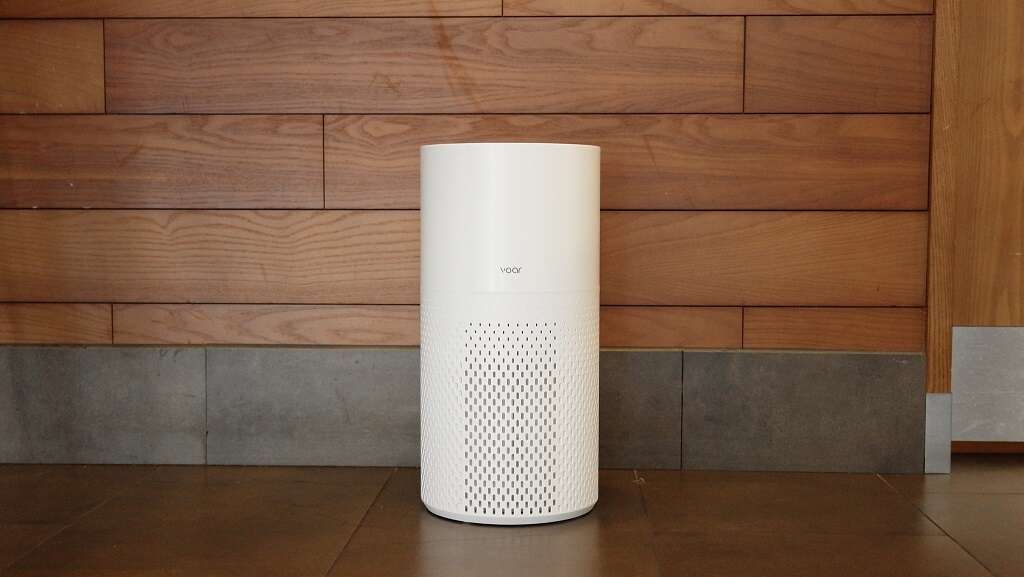
Saline Rinse
Keep a saline rinse at home. There are two options: the neti pot, which is an irrigation system, and a saline nasal spray. Both clean out the nasal cavities and thin out mucus, making it easier to breathe through the nose. The rinsing process also removes any allergies and bacteria caught in the cavity.
Follow the directions to safely rinse both nasal passages. This procedure might also be helpful with colds, flu and sinus infections.4‘Is Rinsing Your Sinuses With Neti Pots Safe?’ U.S. Food and Drug Administration, FDA, www.fda.gov/consumers/consumer-updates/rinsing-your-sinuses-neti-pots-safe
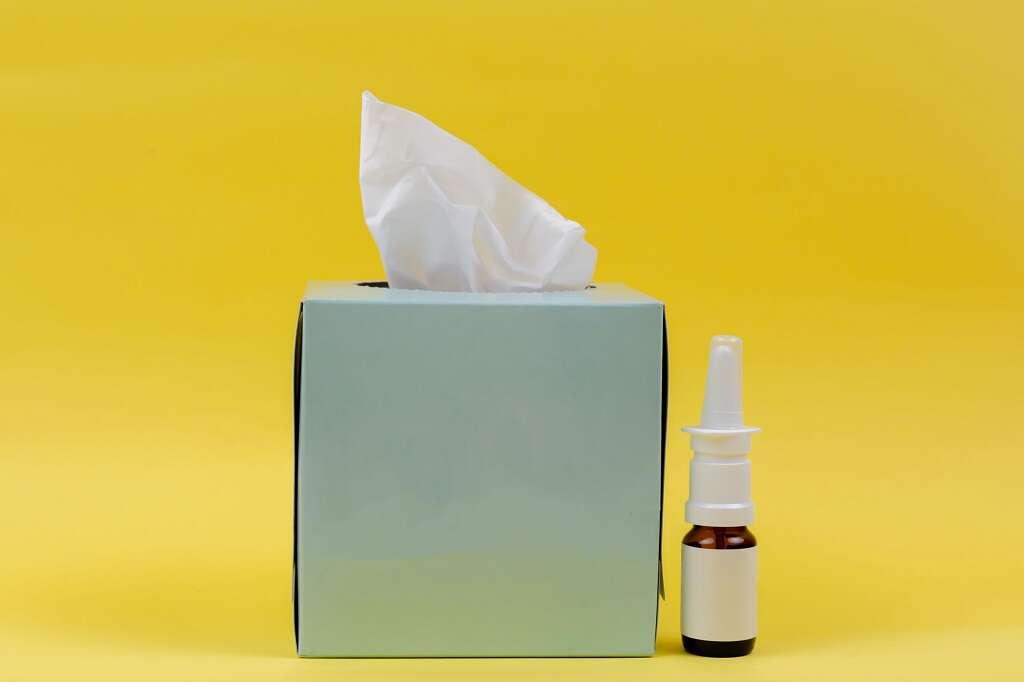
Butterbur
Butterbur is a shrub that grows naturally throughout Europe and parts of Asia and North America used in herbal medicinal practices. During the 17th century, people used butterbur for coughs, breathing issues and skin wounds.
Modern studies show butterbur root and leaf extracts might reduce hay fever symptoms. However, some reports indicate certain butterbur products aren't safe if they contain the chemicals called pyrrolizidine alkaloids (PAs). National Institutes of Health recommends that only certified as PA- free butterbur products should be considered for use.5‘Butterbur.’ National Center for Complementary and Integrative Health, U.S. Department of Health and Human Services, www.nccih.nih.gov/health/butterbur

Drink More
Stay hydrated. Dehydration can make allergy symptoms worse. Both allergens and dehydration increase asthma attacks and difficulty breathing.
Drinking at least eight glasses of water daily also helps thin mucus, making it easier to breathe through the nose and reducing sinus stuffiness. Removing mucus with nose-blowing flushes the allergens from the nasal cavity. Additionally, staying hydrated offers many wellness benefits, including encouraging kidney health and reducing fine lines and wrinkles.6YS; Kim KB; Kwak. ‘Dehydration Affects Exercise-Induced Asthma and Anaphylaxis.’ Journal of Exercise Rehabilitation, U.S. National Library of Medicine, pubmed.ncbi.nlm.nih.gov/31723551/

Wear a Mask
People with allergies who want to work in their yard in the morning or any time of day can limit pollen exposure by covering their nose and mouth by putting on a mask that covers the nose and mouth. Additionally, consider wearing long sleeves and pants to prevent exposing skin to potential allergens.
A mask might also be helpful indoors when cleaning to reduce exposure to dust mites and pet dander.

Boost Vitamin D Intake
Vitamins play a significant role in health. Home remedies for allergies often include supplements. For example, research shows that increasing vitamin D might reduce the severity of allergies and asthma symptoms. One study indicates the vitamin has positive effects on immune cells and might help the body prevent infections and handle inflammatory responses better.7Mirzakhani, H, et al. ‘Vitamin D and the Development of Allergic Disease: How Important Is It?’ Clinical and Experimental Allergy: Journal of the British Society for Allergy and Clinical Immunology, U.S. National Library of Medicine, Jan. 2015, www.ncbi.nlm.nih.gov/pmc/articles/PMC4369152/#
More research is necessary to verify the benefits of vitamin D. Always speak with a doctor before adding any supplement to a daily routine.

Quercetin
Quercetin is a potential natural antihistamine for allergies. It's a member of the flavonoid subgroup, flavanols, and it's an antioxidant. Studies show quercetin might reduce the respiratory effects of allergens by lessening airway inflammation. However, the research is only available for mice. More high-quality reports are necessary to confirm these results.8Mlcek, Jiri, et al. Quercetin and Its Anti-Allergic Immune Response.’ Molecules (Basel, Switzerland), MDPI, 12 May 2016, www.ncbi.nlm.nih.gov/pmc/articles/PMC6273625/
The supplement is available in health food stores. Quercetin is naturally found in several foods and herbs, such as green tea, ginkgo biloba, berries, and black tea.

Increase Omega-3 Fatty Acids
Individuals can increase their omega-3 fatty acids through different foods or take it as a supplement. Research shows the essential nutrient might help the body fight allergic reactions from indoor and outdoor allergen exposure. According to studies, omega-3 fatty acids reduce inflammation and may help reduce airway inflammation from allergies.
Additionally, the essential nutrients have other potential benefits, such as promoting heart health. Speak with a health provider before starting an omega-3 supplement.9Miyata, Jun, and Makoto Arita. ‘Role of Omega-3 Fatty Acids and Their Metabolites in Asthma and Allergic Diseases.’ Allergology International, Elsevier, 27 Oct. 2014, www.sciencedirect.com/science/article/pii/S1323893014000100
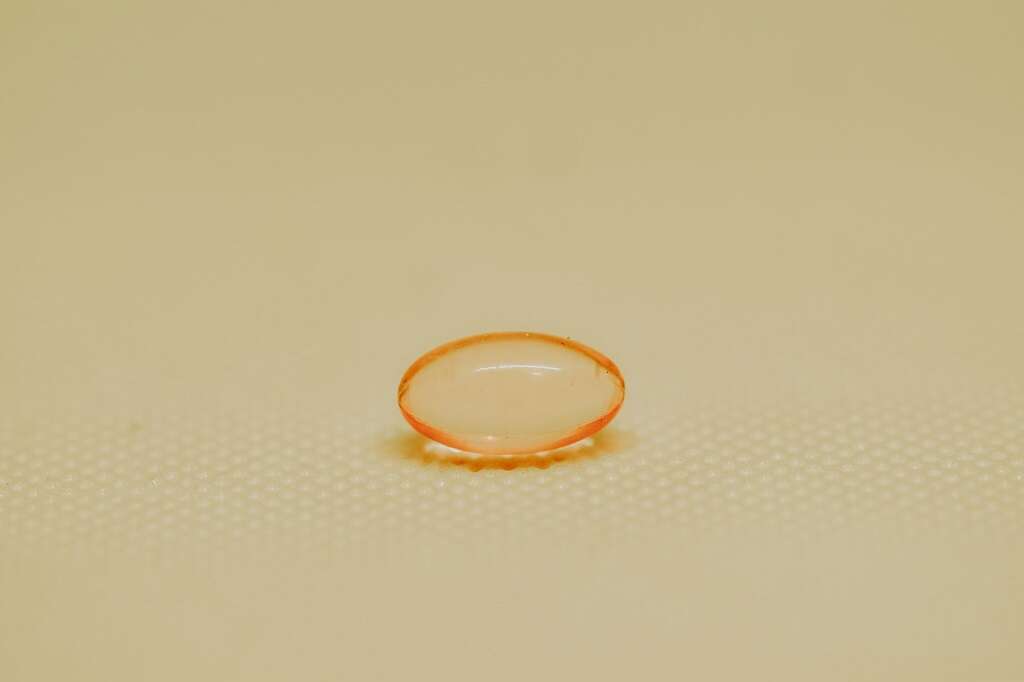
Keeping the AC On
One home remedy for allergies is air conditioning. Keep the windows closed and air conditioning on when the pollen is flowing freely outside, and keep the filter on the air conditioning clean. Look for units with HEPA filters to remove as much pollen and other allergens as possible.
Also, consider a dehumidifier to remove the humidity from the air, since humidity can aggravate allergies. For indoor allergies, run a separate air purifier.
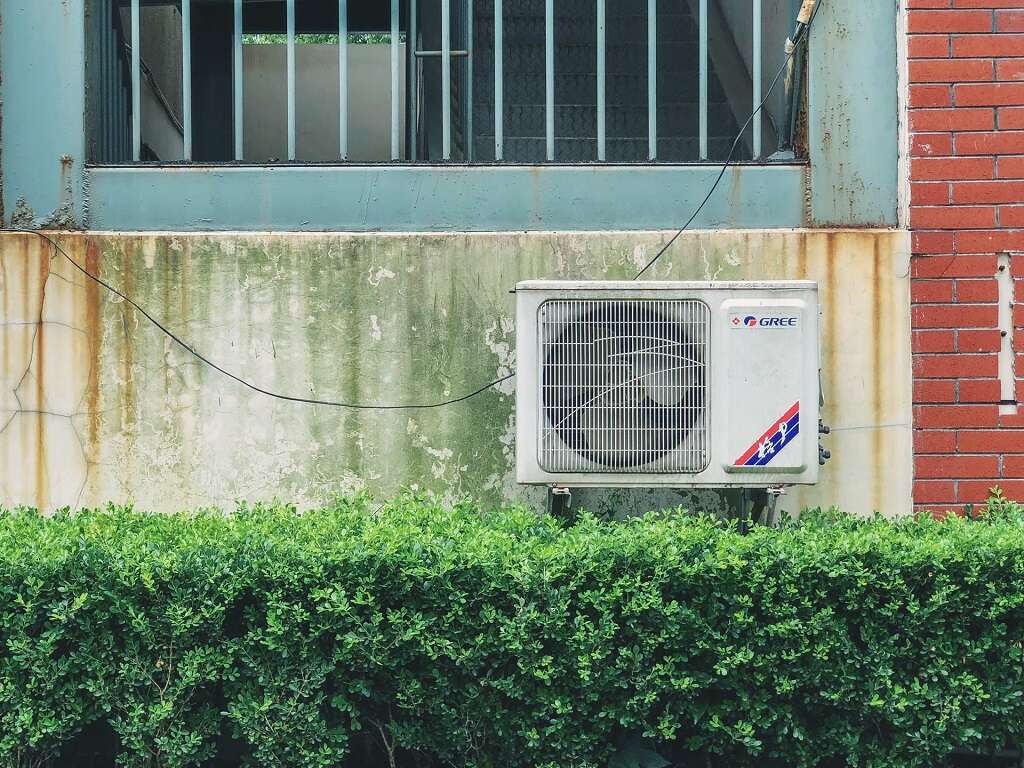
Stinging Nettle Leaf Tea
Stinging nettle tea offers many benefits for health and wellness. This herbal remedy for allergies might help reduce the symptoms of seasonal allergies, such as hay fever. Research indicates it might reduce both inflammation and the excessive release of histamine.
Additionally, the warmth from the tea may soothe a sore throat and help open sinuses, relieving congestion and improving breathing. Also, studies show the herb might reduce the duration and severity of allergies.10Bakhshaee, Mehdi, et al. ‘Efficacy of Supportive Therapy of Allergic Rhinitis by Stinging Nettle (Urtica Dioica) Root Extract: a Randomized, Double-Blind, Placebo- Controlled, Clinical Trial.’ Iranian Journal of Pharmaceutical Research : IJPR, Shaheed Beheshti University of Medical Sciences, 2017, www.ncbi.nlm.nih.gov/pmc/articles/PMC5963652/



